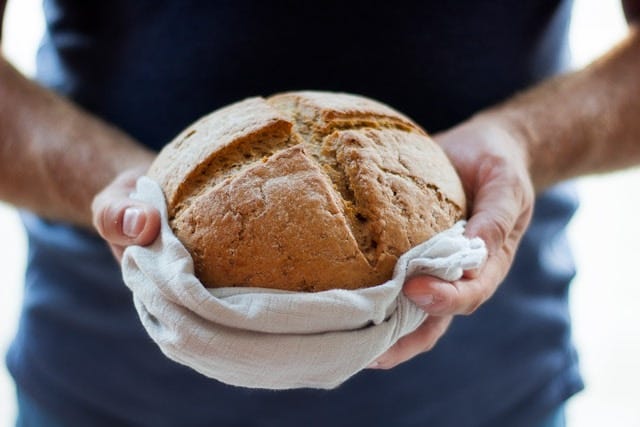True Nourishment
4/10/25 Bible Thought (John 6)

In the sixth chapter of John’s Gospel, the story is recounted where Jesus feeds 5,000. He and His disciples cross over the Sea of Galilee, feed a large crowd, and then return again to the western shore at the city of Capernaum. Jesus’ disciples go first, and He catches up to them by miraculously walking on the water.
After they find themselves in Capernaum, the crowd that was fed on the eastern shore follows. They were seeking Jesus (Jn. 6:24). To this, John recounts,
“Jesus answered them, ‘Truly, truly, I say to you, you are seeking me, not because you saw signs, but because you ate your fill of the loaves. 27 Do not work for the food that perishes, but for the food that endures to eternal life, which the Son of Man will give to you. For on him God the Father has set his seal’” (Jn. 6:26-27).
Essentially, Jesus confronts them because they weren’t following Him, but rather what He gave. They were more interested in the bread necessary to their diet than the Bread of Life. In terms I’m sure we’ve heard before, they wanted the gift, not the Giver.
We must remember that signs and wonders in the Bible were meant to function like signposts. They pointed to something. They gave a supernatural endorsement of a messenger from God. With this, Jesus’ miraculous signs were intended to point to Him as the Messiah. He was the point! The point was not healing the sick, feeding the hungry, or raising the dead. The point was Jesus. A point that this crowd missed entirely.
Jesus was the point.
Then, as the crowd recounts the story of God’s miraculous provision for Israel with manna from heaven, the Lord Jesus responds,
“I am the bread of life; whoever comes to me shall not hunger, and whoever believes in me shall never thirst” (Jn. 6:35).
More significant than natural bread is the spiritual nourishment that comes only through a living relationship with the Savior.
D.A. Carson helpfully comments,
“This does not mean there is no need for continued dependence upon him, for continued feeding upon him; it does mean there is no longer that core emptiness that the initial encounter with Jesus has met.”[1]
The answer to our greatest hunger is Jesus Christ. The famous illustration is that there is a God-sized hole in the human heart that can only be filled with Him, and the only way to know Him is through His Son Jesus Christ (Jn. 5:23-24; 6:29).
The point of the miracles, the point of the provision, the point of it all was Jesus. He was the goal. He is the One who promises eternal life. To eat of the natural bread and to miss the Bread of Life was to miss the point entirely. To enjoy His gifts and miss the Giver was to miss everything.
I wonder how often in our own lives we elevate what He does for us more than who He is? Do we desire His provision, His healing, His answers to our prayers more than we desire Him? In our consistent pursuit of His gifts, let’s not lose sight of the fact that He is the goal.
As the apostle Paul once concluded,
“Indeed, I count everything as loss because of the surpassing worth of knowing Christ Jesus my Lord. For his sake I have suffered the loss of all things and count them as rubbish, in order that I may gain Christ 9 and be found in him, not having a righteousness of my own that comes from the law, but that which comes through faith in Christ, the righteousness from God that depends on faith— 10 that I may know him and the power of his resurrection, and may share his sufferings, becoming like him in his death, 11 that by any means possible I may attain the resurrection from the dead” (Phil. 3:8-11).
If I know Jesus Christ, then I have enough, no matter what lack I might have in this life. Knowing Him is everything.
In the morning, when I rise, give me Jesus.
[1] D. A. Carson, The Gospel according to John, The Pillar New Testament Commentary (Leicester, England; Grand Rapids, MI: Inter-Varsity Press; W.B. Eerdmans, 1991), 288.

